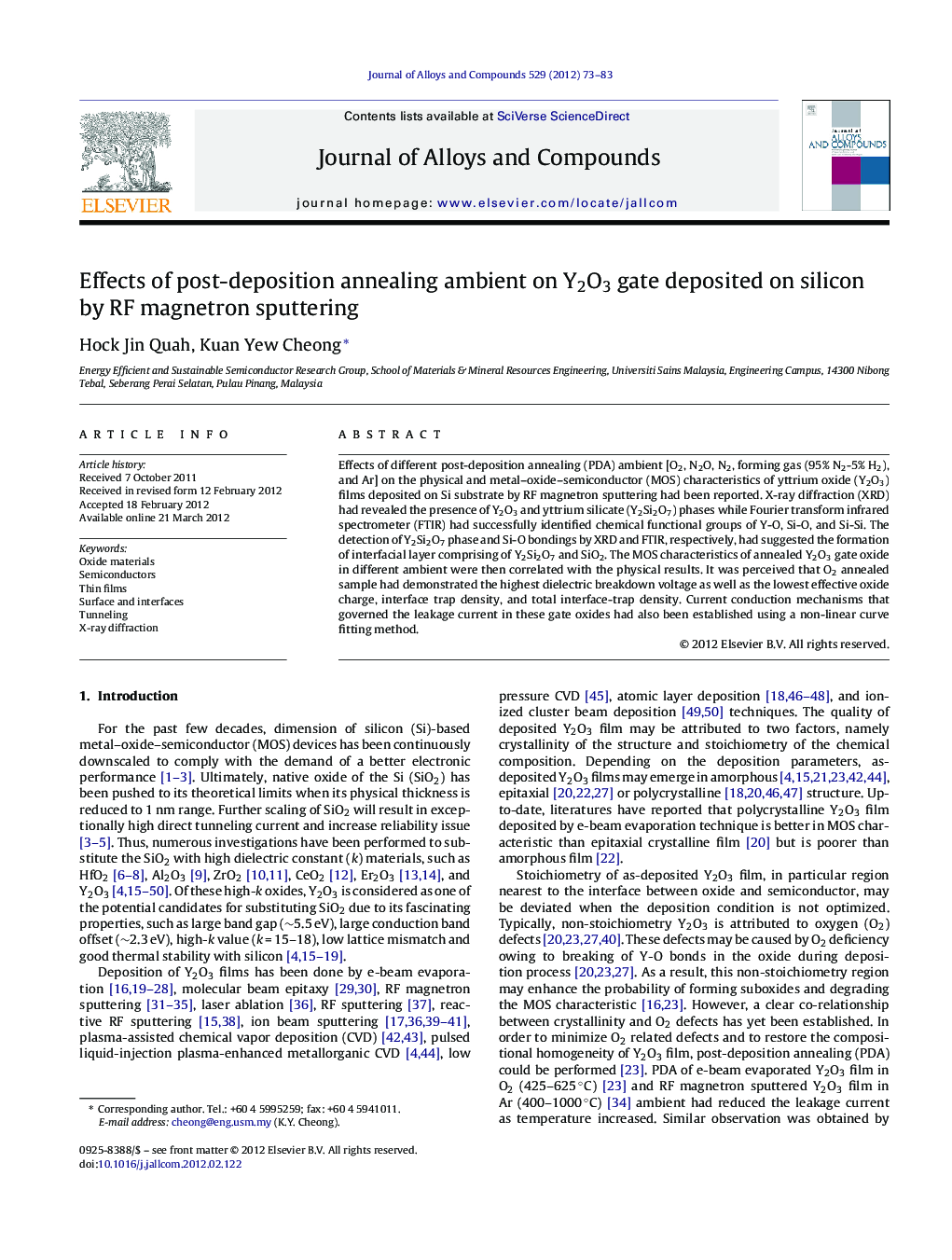| Article ID | Journal | Published Year | Pages | File Type |
|---|---|---|---|---|
| 1616119 | Journal of Alloys and Compounds | 2012 | 11 Pages |
Effects of different post-deposition annealing (PDA) ambient [O2, N2O, N2, forming gas (95% N2-5% H2), and Ar] on the physical and metal–oxide–semiconductor (MOS) characteristics of yttrium oxide (Y2O3) films deposited on Si substrate by RF magnetron sputtering had been reported. X-ray diffraction (XRD) had revealed the presence of Y2O3 and yttrium silicate (Y2Si2O7) phases while Fourier transform infrared spectrometer (FTIR) had successfully identified chemical functional groups of Y-O, Si-O, and Si-Si. The detection of Y2Si2O7 phase and Si-O bondings by XRD and FTIR, respectively, had suggested the formation of interfacial layer comprising of Y2Si2O7 and SiO2. The MOS characteristics of annealed Y2O3 gate oxide in different ambient were then correlated with the physical results. It was perceived that O2 annealed sample had demonstrated the highest dielectric breakdown voltage as well as the lowest effective oxide charge, interface trap density, and total interface-trap density. Current conduction mechanisms that governed the leakage current in these gate oxides had also been established using a non-linear curve fitting method.
► Post-deposition annealing of yttrium oxide (Y2O3) films deposited on silicon in different ambient. ► Formation of a SiO2-like Y2Si2O7 structure in the interfacial layer during annealing in forming gas and nitrogen ambient. ► Correlation between physical results and metal–oxide–semiconductor characteristics of Y2O3 gate oxide.
